At its roots, copyright in the Anglo-American legal system is a statutory grant of rights intended to be an engine for innovation. Copyright and patent legislation is the only type of law whose authorization in the Constitution is specifically tied to a purpose — “to promote the progress of science and useful arts.” If copyright legislation does not serve this purpose it is, arguably, unconstitutional.
This is part of the real irony of SOPA, the bill currently being considered by the House of Representatives that would fundamentally alter how the Internet works in the U.S. in order to protect the traditional entertainment industries. Such a bill, which would kill innovation in the name of protectionism, may be unconstitutional. That it is a bad idea is especially clear when we look at how other countries are considering adjusting their copyright laws precisely to better support innovation and economic growth.
In Brazil, a third draft of proposed copyright legislation has recently been released. As Pedro Paranagua, a Brazilian copyright expert, tells us, there is both good and bad in the bill, but as I read his list of incorporated provisions, I am jealous of the attention being given to the real purpose of copyright, which is economic development through innovation. Exhaustion of rights, what we call first sale in the U.S., would be defined in a way to prevent the recent debacle in which Omega abused copyright, in my opinion, to suppress legitimate price competition for its watches. Collecting societies would be overseen by government watchdogs, and contract principles about serving the public interest and avoiding undue burdens would be explicitly incorporated into the copyright law. Compulsory licenses would be available for uses of orphan works, and creators would have the explicit ability to dedicate their work to the public domain. Finally, there is a proposed set of exceptions that covers at a lot of the socially beneficial uses that are still unreasonably controversial in the U.S.
Even one of the things that Pedro is nervous about, ISP liability under a notice and take down scheme, seems like a good idea that the U.S. must fight to maintain. The notice and take-down system under the DMCA has allowed a lot of innovative businesses to thrive (YouTube being the most prominent), and that system is under severe threat if the provisions of SOPA get enacted. So while Paranagua worries about a DMCA-style regime in Brazil, I am desperately hoping that we can keep that regime in place in the U.S.
Brazil has also been at the forefront of the World Intellectual Property Organizations discussion of limitations and exceptions. The resulting WIPO agenda, looking primarily at exceptions for libraries and for access for persons with disabilities, reflects many of the ideas mention above, including cross-border uses (the subject of first sale and the Costco dispute), a solution to the problem of orphan works, and the relationship between copyright law and private contracts.
This last issue brings me to the most detailed document I have been looking at recently, the “Consultation on Copyright” released by the British government. The UK has undertaken a thorough review of their copyright law in the past couple of years, explicitly to address the places where copyright interferes with innovation rather than fostering it. The consultation is seeking hard data about the impact of the changes that were proposed by the commission it set up, called the Hargreaves Commission. Many of the provisions are similar to the ones I have already mentioned. But here is the language the really caught my eye:
The Government agrees that, where a copyright exception has been established in UK law in order to serve certain public purposes, restrictions should not be re-imposed by other means, such as contractual terms, in such ways as to undermine the benefits of the exception.
Although contract terms that purport to limit existing exceptions are widespread, it is far from clear whether such terms are enforceable under current contract law. Making it clear that every exception can be used to its fullest extent without being restricted by contract will introduce legal and practical certainty for those who rely on them.
I have argued in the past that contracts should not be allowed to preempt copyright’s limitations and exceptions, at least in cases where the contract at issue is not subject to “arms length” negotiation. Here the Conservative government seems to be embracing that position (not because I suggested it, of course, but because the Hargreaves commission did) and even carrying it further. Recognizing that copyright exists to serve a public purpose, and that that purpose should not be undermined by one-sided private agreement, such a “click-through” contracts on websites, would be an important step toward providing the consistency and certainty that all law-making aims for.
The point of this very quick and cursory survey of international proposals for copyright reform is simple. Throughout the world, even in those countries that, unlike the U.S., embrace a natural-rights account of copyright, reform is focused on supporting innovation and not allowing a system that worked in the past become an obstacle for the future. Yet in the U.S. all of our copyright proposals, and even statements from our Registrar of Copyrights, seem focused on protecting the old ways and staving off as long as possible the innovation that provides our best economic hope. If we cannot learn from our competitors and our trading partners, we will certainly be left behind.

